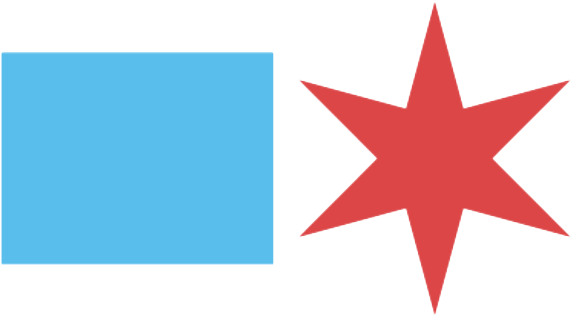Mayor Emanuel Announces 'Opportunity Areas' As Part of Long-Term Strategic Vision to Support Growth and Development Across Chicago
Nearly $3 Billion in Private and Public Funds to Bolster Neighborhoods Developments, Seize Opportunities
As part of a holistic and strategic vision to foster and seize upon growth and development in neighborhoods across Chicago, Mayor Rahm Emanuel today announced nearly $3 billion in private and public development projects in seven targeted Chicago neighborhoods through a new “Opportunity Planning” initiative. The neighborhoods include Englewood, Pullman, Rogers Park, Uptown, Little Village, Bronzeville, and the Eisenhower Corridor.
“Each of these areas is unique and full of potential and the City will play an important role in supporting their growth. Economic development and a neighborhood’s success are reliant upon the support and strategic vision these ‘Opportunity Area’ plans provide,” said Mayor Emanuel. “The City of Chicago in coordination with the private sector has a vital role to play to help communities showcase and support their entertainment, economic and cultural assets. Only then will Chicago be able to live up to its potential as the global city that it should be.”
City departments and sister agencies began convening last Fall and Winter to discuss how past, current, and future projects can foster certain synergies for area residents and businesses to help them attract more visitors and economic activities.
The City will be leveraging $2.9 billion – including $330 million public funding and $2.6 billion in private funding - in new economic development, housing, and quality of life improvements for residents and businesses.
“These areas already have momentum. The initiative will coordinate ongoing progress with strategic investments to produce faster and more sustainable results,” said Andrew J. Mooney, commissioner of the Department of Housing and Economic Development (DHED).
The City of Chicago has identified key community development areas as part of a comprehensive effort to maximize opportunities for neighborhood growth and community improvement.
City departments and sister agencies convened throughout the fall and winter to discuss how past, current, and future projects can foster quality-of-life synergies for area residents and businesses. Based on potential impact and need, seven geographic areas were identified for opportunity-based development initiatives. Current and future development projects in each area total more than $2.9 billion. Public funding includes a variety of federal, state and local sources, including bonds, Tax Increment Financing, land sales, and the capital budgets of sister agencies.
The following are the goals and highlights of each Opportunity Area:
BRONZEVILLE
Goal: Implement ambitious redevelopment strategies that connect the entire region from the South Loop to Hyde Park in order build upon a growing convention traffic and tourism in the region.
• Identify and implement a viable, long-term redevelopment plan for the Michael Reese site.
• Support McCormick Place expansion with new lodging facilities.
• Maximize the potential of Motor Row as a pedestrian-oriented entertainment district.
• Support the redevelopment of 47th Street with new residential and commercial projects.
• Leverage housing resources in the Grand Boulevard Micro Market Recovery Program area.
• Assist Mariano’s, WalMart and other retailers in establishing new neighborhood markets.
EISENHOWER CORRIDOR
Goal: Create a new nexus of entertainment and education on opportunities in the Near West Side.
• Enhance Damen Avenue and Madison Street as mixed-use gateways to the community.
• Integrate Crane High School and Malcom X College into the health-related industries within the Illinois Medical District.
• Complete Chicago Housing Authority transformation programs and neighborhood amenities.
ENGLEWOOD
Goal: Leverage City investments to support mixed-use neighborhood stabilization and recovery
• Utilize vacant land for new urban agriculture, recreation, manufacturing, cultural activities and housing market stabilization
• Support affordable housing through Micro Market Recovery Program
• Leverage Kennedy King as a community anchor
• Focus on specific nodes including 63rd/Halsted, Garfield Boulevard, Norfolk Southern yard
LITTLE VILLAGE
Goal: Provide enhanced community services and quality-of-life amenities for a dense population base.
• Redevelop the former Celotex site as new Chicago park.
• Redevelop the former Washburne site as St. Anthony Hospital and Wellness campus.
• Build a new Gateway to 26th Street with additional street resurfacing, traffic signals
• McCormick Elementary School early learning facility renovations.
PULLMAN
Goal: Foster the creation of new mixed-use development within a historic neighborhood context
• Improve marketing of historic Pullman as cultural attraction.
• Pursue National Historical Park designation for Pullman National Register District.
• Complete Pullman Park mixed-use development.
ROGERS PARK
GOAL: Enhance Loyola University’s efforts to reinvent itself as a residential school.
• Compliment campus expansion efforts with Devon Avenue and Broadway streetscape projects.
• Enhance CTA Red Line stations.
• Support retail and commercial investment on Devon, Sheridan and Broadway.
• Create a pedestrian- and bike-friendly environment.
UPTOWN
GOAL: Solidify Uptown as destination for destination-oriented entertainment and ethnic culture.
• Enhance Broadway and Lawrence Avenue with pedestrian friendly streetscaping.
• Revitalize the Wilson CTA station as a pedestrian-friendly community anchor.
• Maximize existing facilities for entertainment and nightlife.
• Enhance Argyle Street as a center for Asian culture and cuisine.
# # #
